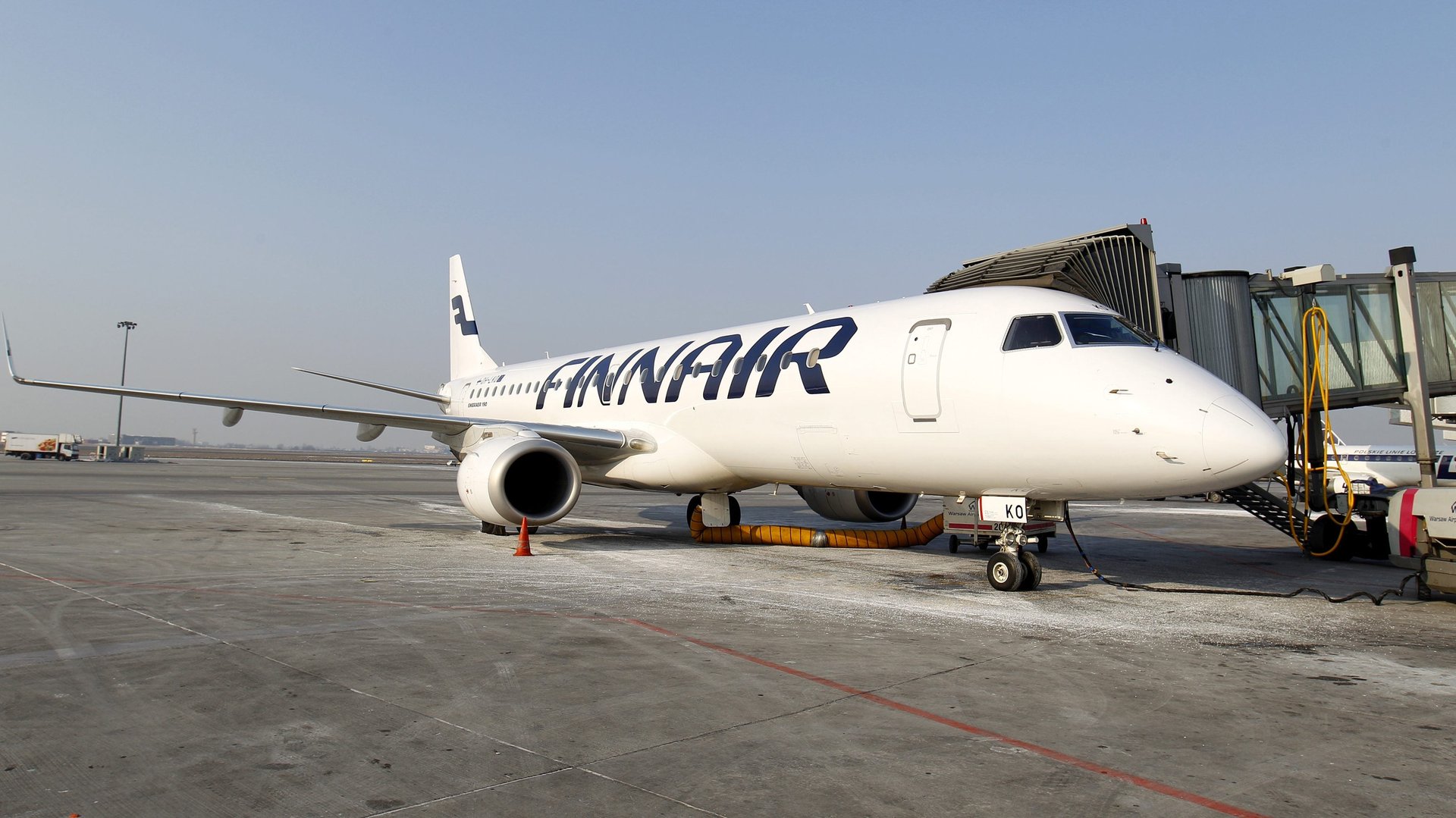Finnair’s success reveals that, for most people, flight shame simply isn’t an option
The Finns are a people so conscientious that it’s literally a part of the nation’s brand. A sustainability marketing campaign released this week encouraged visitors to the Nordic country to “be more like a Finn”: Practically speaking, according to the Visit Finland website, that means treating the wilderness with respect, being “considerate with cameras or loud vocals,” and putting the climate first.


The Finns are a people so conscientious that it’s literally a part of the nation’s brand. A sustainability marketing campaign released this week encouraged visitors to the Nordic country to “be more like a Finn”: Practically speaking, according to the Visit Finland website, that means treating the wilderness with respect, being “considerate with cameras or loud vocals,” and putting the climate first.
But the third-quarter results of Finnair, released today, suggest otherwise. Despite the much-covered flight shame movement, the airline is now one of the fastest-growing pan-European airlines, with passenger numbers up by 12%.
Speaking to analysts, CEO Topi Manner addressed the effect of calls to consumers from environmentalists to fly less. “There are many questions, and customers are very interested about how to make aviation more sustainable. And we are definitely working on that one all the time,” he said. “But as you see from our traffic figures and number of passengers, we don’t see any impact on our traffic figures or number of passengers coming out of the flight shame [movement].”
This might seem surprising. A UBS survey of 6,000 people across the US, Germany, France, and the UK in May found around one in five reduced the number of flights they took in the last year because of the impact on the environment. The climate-minded Finns, whose government this summer announced ambitious plans to be carbon-neutral by 2035, would seem like an obvious target for the flight-shaming movement.
The reason they aren’t, then, isn’t necessarily because they don’t care—but because, in the vast majority of cases, there is no real alternative. While this is obviously the case for long flights, it’s also true of shorter routes within Europe and Finland, which together made up about 46% of Finnair’s revenue by traffic area.
Let’s take the 380 mile (600 km) domestic journey from the capital of Helsinki to the northern town of Oulu, a technology hub, as an example. Finnair operates the 70 minute service between these two cities 65 times a week, according to the airline’s website, mostly for commuting tech workers. Choosing not to fly would leave them with few feasible substitutes. Driving takes around seven hours; public transport closer to nine. If you’re shuttling between the two cities for meetings or even a weekend with family, it’s almost certainly more time than you can afford to give up.
If Finns had a good alternative, there’s every indication that they would at least consider it. Introducing effective high-speed rail, of the sort that exists in France or Germany, could reduce the domestic journey between Oulu and Helsinki to less than three hours—but it’s a long way down the government’s list of priorities. The country’s three first high-speed rail links, announced last month, are more than a decade away—and mostly for journeys too short to be attempted in a plane.
Similar factors come into play in much of the rest of the world, including the US: big distances, and bad trains. People may want to opt out of flying, but a lack of other solutions gets in the way. The flight shame movement might leave us feeling bad about our travel, but until there’s another way to do it, we’ll carry on getting on planes.
Looking for more in-depth coverage of airlines? Sign up for a free trial of Quartz membership, and read our premium field guide on the airline industry’s tipping point.